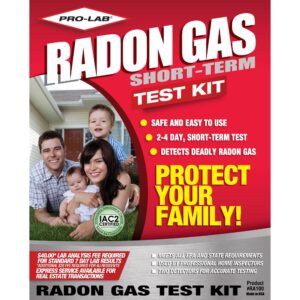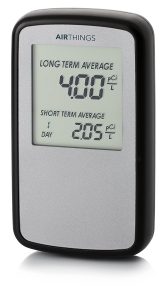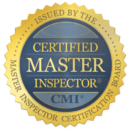
Short-term tests:
These are useful to see if further testing is warranted. Most are activated charcoal-based or use electret ion levels for two to seven days. You can mail your tests to a lab for the results. Short-term tests are available at home centers, hardware stores, and online retailers.

Long-term radon tests:
These radon tests measure levels for 90 days to one year. Most, such as the Airthings Corentium Home Model – Digital Radon Detector test, is based on alpha particle tracking. This is a more accurate indicator of average annual levels, which can vary significantly from day to day and month to month based on factors such as a drop in air pressure, gusty winds, variable soil moisture, and snow cover, which traps radon gases. Long-term radon tests are available through state radon agencies and online retailers.

Continuous radon tests:
Electric monitors, such as the Airthings Corentium Pro Digital Radon Monitor, Portable. These can be used for both short-term and long-term testing to give you a running average every day.
When an initial short-term test registers 4 pCi/l or higher, the EPA recommends doing a 2nd radon test. A long-term test will give you the most accurate information, but the short-term test is acceptable if you need the results quickly, such as for a real estate transaction, or your first levels registered 8 pCi/l or higher. If a second test registers about 4 pCi/L, consider taking steps to reduce radon levels in your home, the EPA cautions. If your home has high levels of radon, you can start by trying these easy repairs to reduce radon levels. These efforts alone rarely reduce levels significantly, but if your level is only slightly elevated, these repairs might make a difference. They will also make out her radon reduction methods more effective and cost-efficient
- Caulk foundation cracks, construction joints, and other openings with polyurethane caulk.
- If you have a sump pump, install an airtight cover on it (choose one that allows access to your sump).
- Cover soil in crawl spaces with polyurethane plastic sheeting ( with a minimum thickness of 6 mils, available at home centers) tightly attached to the walls.
- You can also try sealing concrete, although the EPA has found concrete sealers to be a temporary solution at best.
Once you’ve tackled this, retest the home. If levels are still high, consider contacting a pro.





